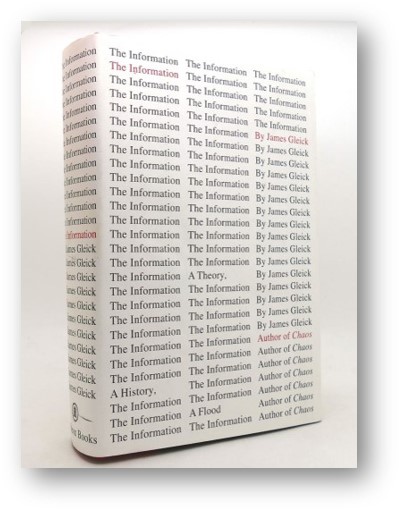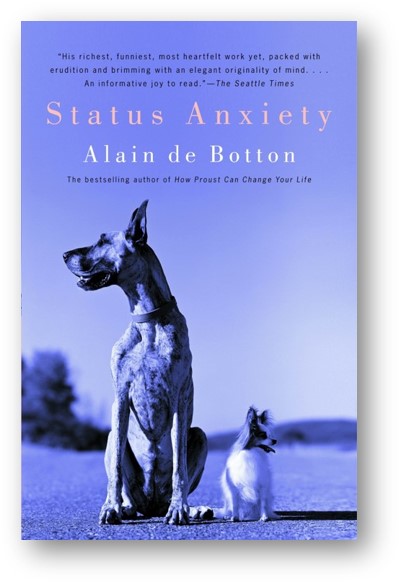
Perspectives on information, technology and people
16 August 2022 1230-1345
On Information
Today, we will see the form that each class session will take from now on. Expect to see this pattern repeat itself weekly.
① info world
We will start each session with one of us standing before the assembled group and introducing us to an "information world" that they are familiar with, but one that may well be new to the rest of us.
This will be voluntary: there will be no one necessarily assigned to do this weekly, though we hope everyone would want to share of themselves by taking advantage of the opportunity.
back to top
② watch presenter in Sakai calendar
Starting today, one of you all will introduce and discuss the video we were to have watched.
We will start each session with one of us reviewing a video we all should have watched. This is an example of such a video.
But, of course, you all will have watched it, thought about it, and will be ready to offer discussion about it. One of you, though, will have the responsibility of standing before the class to introduce and discuss it.
This first one, by a person named Dolors Jou Torras (described as a "physicist/mathematician/philosopher"), is a wide ranging philosophical consideration of our topic.
The second is a discussion with James Gleick, the author of a required reading for today.
back to top
③ read presenter in Sakai calendar
Starting today, one of you all will introduce and discuss the required readings we were all to have read.
But, of course, you all will have read it, thought about it, and will be ready to offer discussion about it. One of you, though, will have the responsibility of standing before the class to introduce and discuss it.
If there is more than one reading, each reading will be individually presented by a single individual.
With that in your mind, read this chapter in Gleick's book and be ready to discuss it in class

Gleick, J. (2011).
The information: A history, a theory, a flood.
New York, NY: Pantheon Books.
From the New York Times:
... a sweeping survey that covers the five millenniums of humanity's engagement with information, from the invention of writing in Sumer to the elevation of information to a first principle in the sciences over the last half-century or so. It's a grand narrative if ever there was one ...
-
read chapter 7, Information theory. As you read it, think about:
p. 213 - the idea that coding is not meant to obscure, but to illuminate
p. 219 - "information is uncertainty, surprise, difficulty, and entropy"
p. 224 - the concept of a state
back to top
④ ponder presenter in Sakai calendar
Starting today, one of you all will introduce and discuss the optional readings.
Hopefully, all of us will have read it, thought about it, and will be ready to offer discussion about it. One of you, though, will have the responsibility of standing before the class to introduce and discuss it.
If there is more than one reading, each reading will be individually presented by a single individual.
-
Lester, J., and W. C. Koehler. "Fundamental Concepts of Information."
In Fundamentals of Information Studies, pages 16-25 only. 2nd ed. New York: Neal-Schuman, 2007. -
Marchionini, Gary. "The Many Meanings of Information."
In Information Concepts: From Books to Cyberspace Identities, pages 1-9 only.
Synthesis Lectures on Information Concepts, Retrieval, and Services. Morgan & Claypool, 2010.
back to top
⑤ listen presenter in Sakai calendar
Starting today, one of you all will introduce and discuss this music video, or perhaps these music videos.
Music has been a means of information exchange for eons. This semester, we will include in each session an opportunity to watch a music item, to think about what the piece might mean for our understanding of the world around us.

Thoughts on music from p. 249 in Alain de Botton's Status Anxiety.
Music in any form can be a great leveler. We might, for example, imagine joining an unfamiliar congregation within the walls of a cathedral to hear Bach's Mass in B Minor ("the greatest work of music of all ages and of all peoples," in the view of Hans-Georg Nigeli, writing in 1817).
Much may separate us: age, income, clothes and background. We may never before have spoken to one another and may be wary of letting anyone catch our gaze. But as the Mass begins, so, too, does a process of social alchemy.
The music conveys feelings that hitherto seemed inchoate and private, and our eyes may fill with tears of relief and gratitude for the gift given us by the composer and musicians in making audible, and hence available to us and to others, the movements of our collective soul. Violins, voices, flutes, double basses, oboes, bassoons and trumpets combine to create sounds that evoke the most secret, most elusive aspects of our psyches.
Moreover, the public nature of the performance helps us to realise that if others around us are responding as we are to the music, then they cannot be the indecipherable enigmas we imagined them to be. Their emotions run along the same tracks as ours, they are stirred by the very same things and so, whatever the differences in our appearance and manner, we possess a common core, out of which a connection can be forged and extended far beyond this one occasion.
A group of strangers who initially seemed so foreign may thus in time, through the power of choral music, acquire some of the genuine intimacy of friends, slipping out from behind their stony facades to share, if only briefly, a beguiling vision of humankind.
Stand by me
I will have one selected for each session, but you all can add to the list and to our mutual growth in understanding by showing us items you find interesting. This time Playing for Change. From the Wikipedia entry ...
The project started in 2004 with the organization's self described goal to "inspire, connect, and bring peace to the world through music".
The creators of the project, Mark Johnson and Enzo Buono, traveled around the world to places such as New Orleans, Barcelona, South Africa, India, Nepal, the Middle East and Ireland. Using a mobile recording equipment, the duo recorded local musicians performing the same song, interpreted into their own style.
Among the artists participating, or openly involved in the project, include Vusi Mahlasela, Louis Mhlanga, Clarence Bekker, Tal Ben Ari (Tula), Bono, Keb' Mo', David Broza and Grandpa Elliott. The project's first single "Stand by Me", began with a Santa Monica street performer named Roger Ridley (now deceased).
The duo traveled the world, recording more and more musicians. All of these versions were considered for mixing a pastiche final version.
Six years later, the same artists did the same song, in a different manner. Which has more emotional impact?
back to top
⑥ an unanswered question
Finally, at least one time per session, you all are offered the opportunity to put me on the spot.
What is the "one big question" that the readings posed, but did not answer?
If I can't come up with an answer immediately, I will research it and have it for you at the subsequent session.